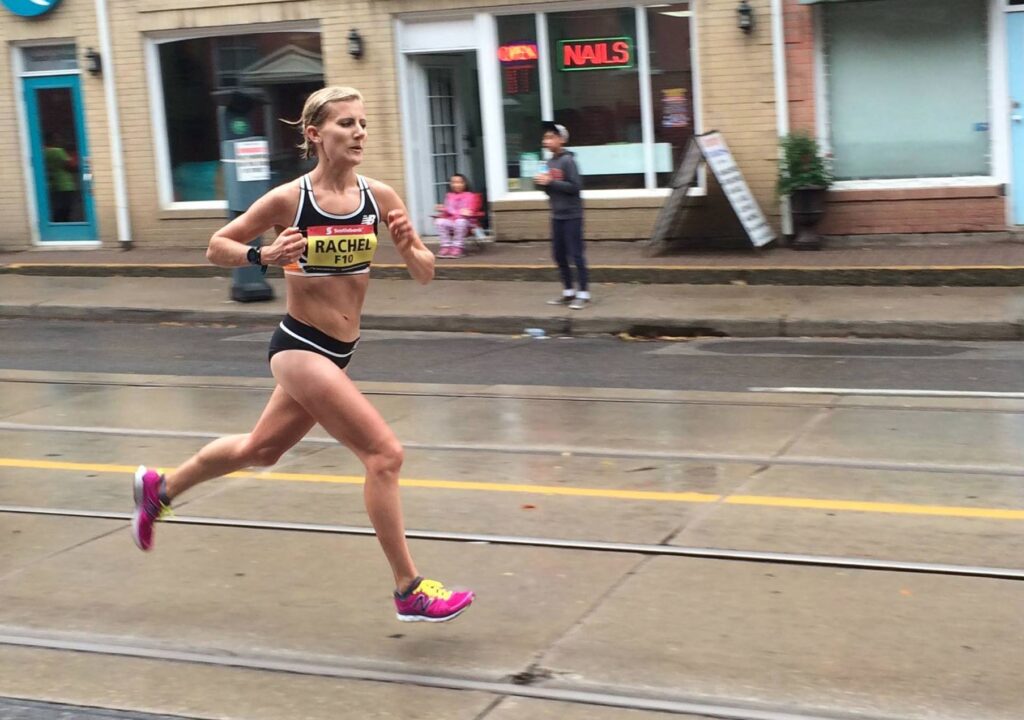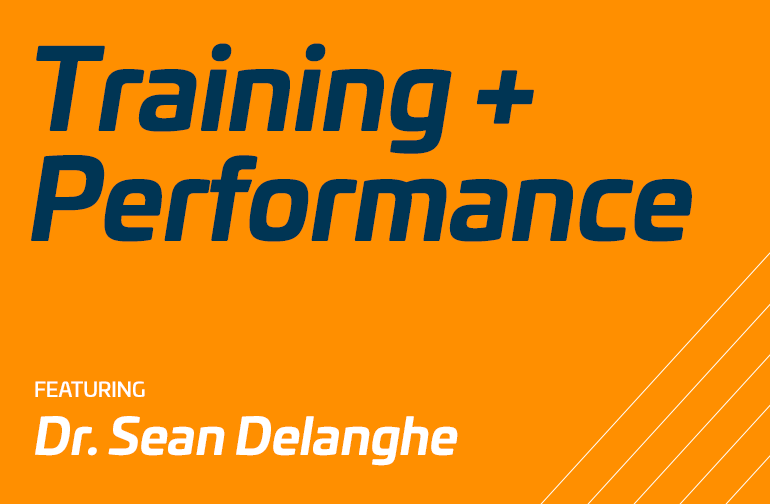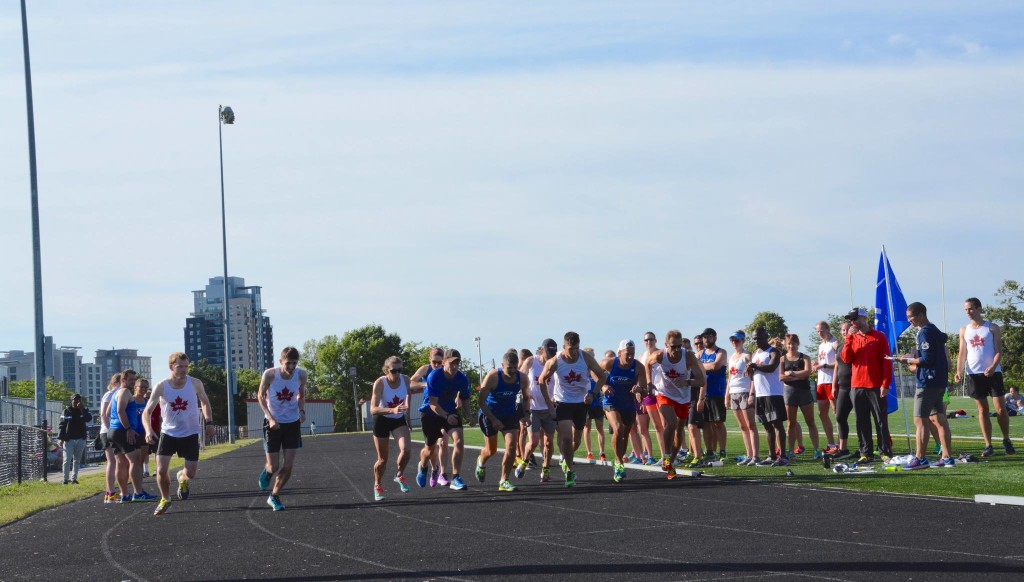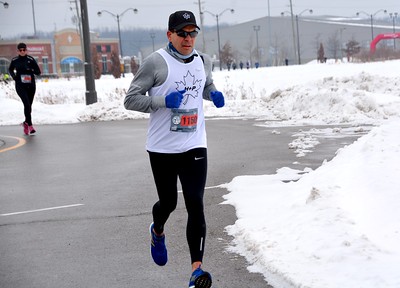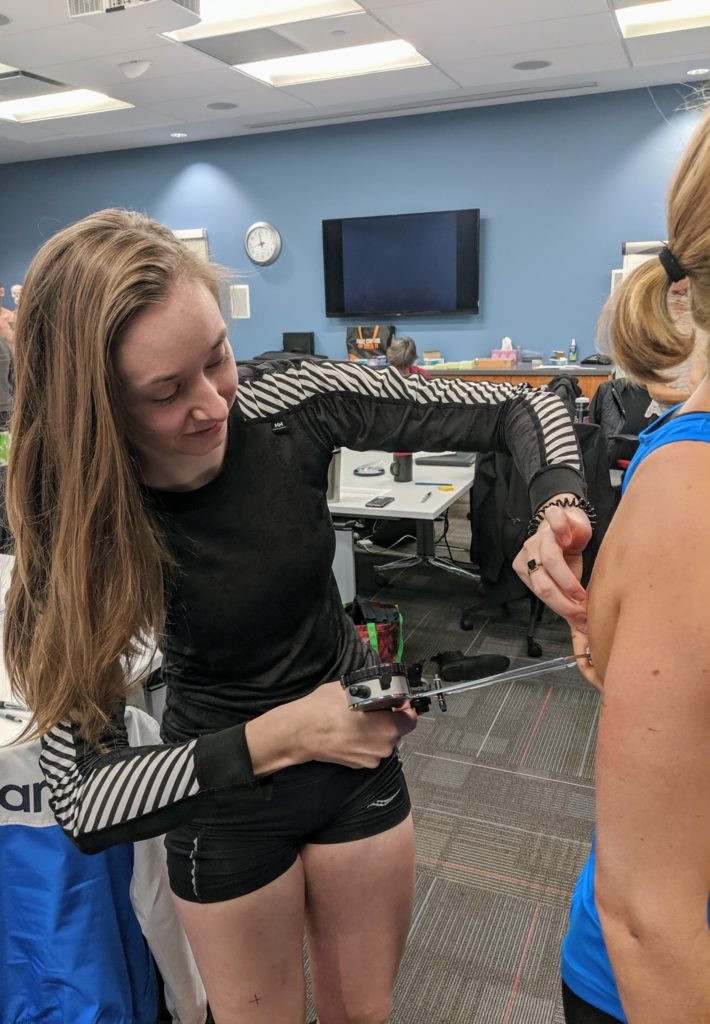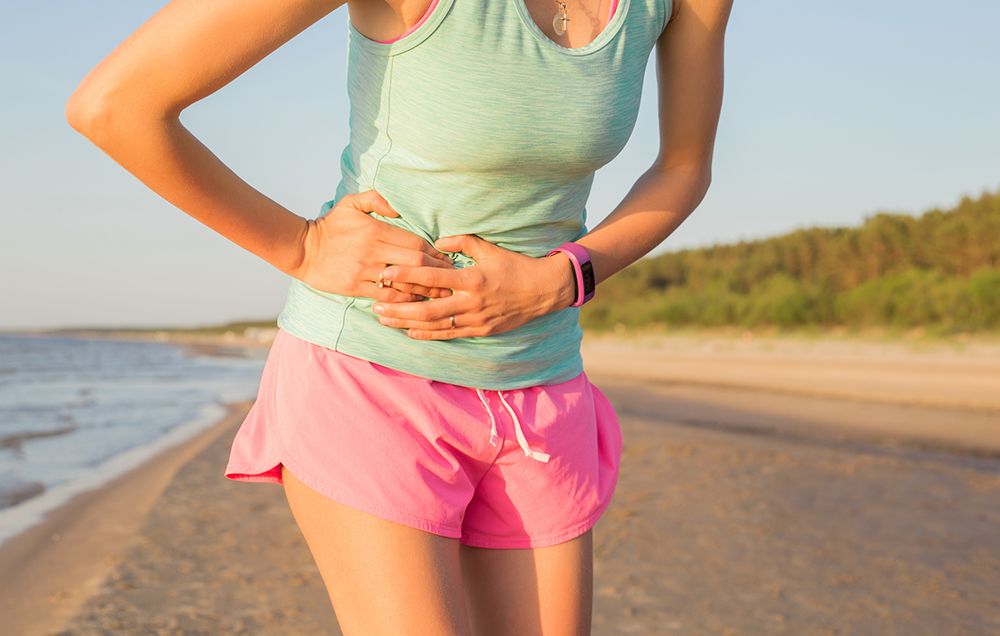If you have ever had the pleasure of talking with me about sport nutrition, you may have seen my eyes light up and and a big smile on my face as I passionately engage in conversation with you. That is simply because I absolutely LOVE talking about how nutrition can help you reach your athletic goals. I thoroughly nerd-ed out while researching this current topic for the dietitians at the Canadian Sport Institute, of how athletes can use ice slushy’s to keep them cool and increase their performance!
Why is Keeping the Body Cool Important?
There are a few signaling pathways the body can use to increase feelings of fatigue. We all should know that low glycogen (carbohydrate stores) signal fatigue (aka when a marathoner “hits the wall”), but did you know that overheating will do the same thing? The body uses this as a safety mechanism in order to maintain a safe internal temperature. Therefore, exercising in extreme heat presents a few problems.
Problem 1. Increased heat results in increased sweating, which can make it difficult to maintain adequate hydration.
Problem 2. Dehydration increases core temperature and leads to increased use of glycogen.
Problem 3. Dehydration, increased core temperatures and low glycogen levels all lead to early fatigue and decreased performance.
To combat the effects of exercising in the heat, there are a few things to think about: stay hydrated as best you can, fuel appropriately with a good carbohydrate plan and lastly, try to slow the rate of increasing body temperature! Hydration in itself results in significantly lower body temperatures compared to letting yourself dehydrate past 2%, however sometimes in the extreme heat, cool water (or warm if its been on the fuel station for a while) might not be enough to preserve your performance. In this blog we will talk how incorporating an ice slushy can help you regulate your body temperature and perform better in the heat!
Pre or During Cooling with Ice
Pre-cooling strategies aren’t new and have been used to cool athletes prior to exercise in the heat. Strategies include arm, leg or full body immersion in an ice bath or using an ice vest. Sometimes these are not available or convenient (especially the bath!). Therefore, enter ice slushy! The main purpose of the drink prior to an athletic event is to drive the core temperature down before starting exercise, thus extending the time body temperature will rise to a critical high resulting in delayed fatigue. Pre-cooling provides a heat sink so during exercise more heat can be stored, and if ice is ingested during exercise it can reduce some of the heat storage even further.
Effects On Core temperature
The research consistently shows that the use of a pre-cooling protocol with an ice slushy results in reductions in rectal temperatures by 0.2-0.7°C. As the athletes began to exercise their core temperature was significantly lower for 25-40 minutes into exercise even when compared to precooling with cold water (4°C). If core temperature is measured from a pill, it results in reductions of core temperature from 1-2°C in upper gastrointestinal tract (Ihsan et al., 2010; Burdon et al., 2013; Stevens et al., 2013; Zimmerman et al., 2017). Pre-cooling seems to have a greater effect if done in a cooler environment, resulting in the best reductions in core temperature (Maley et al., 2018).
Performance
Ingestion of an ice slushy as a pre-cooling protocol seems to increase time to exhaustion (TTE) in the heat, as performance can increase 3-19% when compared to cool or room temperature water (4-37°C). (Siegel et al., 2010; Naito & Ogaki., 2017; Takeshima et al., 2017). Naito & Ogaki (2017) showed that pre-cooling with 1.25g/kg ice every 5min for 30min + mid-cooling with 2g/kg ice every 15mins resulted in 16% increase in TTE compared to same protocol with cold water (4°C). Research has also looked at the effect of timing of pre-cooling on cycling performance, where consuming ice after the warm up resulted in significant beneficial effect on performance vs a control beverage (37°C) (Takeshima et al., 2017).
Time trials can be improved by 1.7-10% for 10k run times (Mejuto et al., 2018) or 40k cycling (Ihsan et al., 2010). One study compared pre-cooling with 6.7g/kg ice ingestion split into doses consumed every 10minutes for 30minutes compared to water (27°C) showed there was a 6.5% better time trial performance in 40k cycle test (Ihsan et al., 2010).
Triathlons
Stevens et al., 2013 look at performance in triathletes in the heat. The trials included a 1500m swim, 1h bike at varied intensities, and a 10k self paced run, in which the 10k run was the performance measure. They consumed 10g/kg ice slushy (made with sport drink) or warm (32-34°C) sport drink during 15-45minutes into the bike portion of the trial, then drank as needed after that. The ice ingestion during the cycle resulted in 2.5% better run performance and was especially evident in the last 5km of the run, which is consistent with most research.
How Can I Use This?
7.5g/kg split into doses of 1.25g/kg/5mins for 30mins or 2.5g/kg/5mins for 15mins seems to be the most common protocol used and is well tolerated. The temperature of slushy’s should be -1- +1°C and can been made with plain ice, or sport drink ice cubes, which would be good for carbohydrate consumption for fueling purposes. Keep in mind individual fluid needs, but research also shows that ad libitum fluid intake is higher when a cold drink is offered. Pre-cooling with ice slushy’s should be done as close to exercise as possible, preferably post-warm up in the 15-30 minutes leading up to exercise to maximize the amount of time with lower core temperatures (Takeshima et al., 2017). You could also adopt a mid-cooling strategy to continue to cool your internal temperature.
Recipe:
Example for a 60kg person (60 x 7.5=450), pour 450ml of Gatorade into an ice cube tray and freeze. Add a splash of Gatorade and blend. Consume in 3 “doses” 5 mins apart (or sip on it for 15 mins). If you have a thermometer you could make sure it has reached -1-+1 °C for the best results.
Ideas: Freeze sport drink, diluted juice or sweetened coffee and enjoy prior to your event for your fluid, carbs and caffeine hit.
Reference:
Burdon CA, Hoon MW, Johnson NA ,Chapman PG, O’Connor HT (2013) The effect of ice slushy ingestion and mouthwash on thermoregulation and endurance performance in the heat. International Journal of Sport Nutrition and Exercise Metabolism.23 458-469
Ihsan M, Landers G, Brearley M, Peeling P (2010) Beneficial effects of ice ingestion as a precooling strategy on 40-km cycling time-trial performance. International journal of Sports Physiology and Performance. 5 140-151
Maley MJ, Minett GM, Bach AJE, Zietek SA, Stewart KL, Stewart IB (2018) Internal and external cooling methods and their effect on body temperature, thermal perception and dexterity. PLoS ONE 13(1): e0191416. https://doi.org/ 10.1371/journal.pone.0191416
Mejuto G, Chalmers S, Gilbert S, Bentley D (2018) The effect of ice slurry ingestion on body temperature and cycling performance in competitive athletes. Journal of Thermal Biology 72: 143-147
Naito T, Ogaki T. (2016) Pre-cooling with intermittent ice ingestion lowers the core temperature in a hot environment as compared with the ingestion of a single bolus. Journal of Thermal Biology. 59 13-17.
Siegel R, Mate J, Brearley M.B, Watson G, Nosaka K, Lairsen P.B (2010) Ice slurry ingestion increases core temperature capacity and running time in the heat. Medicine and science in sports and exercise. 42(4) 717-725
Stevens CJ, Dascombe B, Boyko A, Sculley D, Callister R (2013) Ice slurry ingestion during cycling improves Olympic distance triathlon performance in the heat. Journal of Sport Sciences. 31(12) 1271-1279
Takeshima K, Onitsuja S, Xinyan Z, Hasegawa H (2017) Effect of the timing of ice slurry
ingestion for precooling on endurance exercise capacity in a warm environment. Journal of Thermal Biology. 65 26-31
Zimmermann M, Landers GJ, Wallman KE (2017) Crushed ice ingestion does not improve female cycling time trial performance in the heat. International Journal of Sport Nutrition and Exercise Metabolism 26: 67-75

